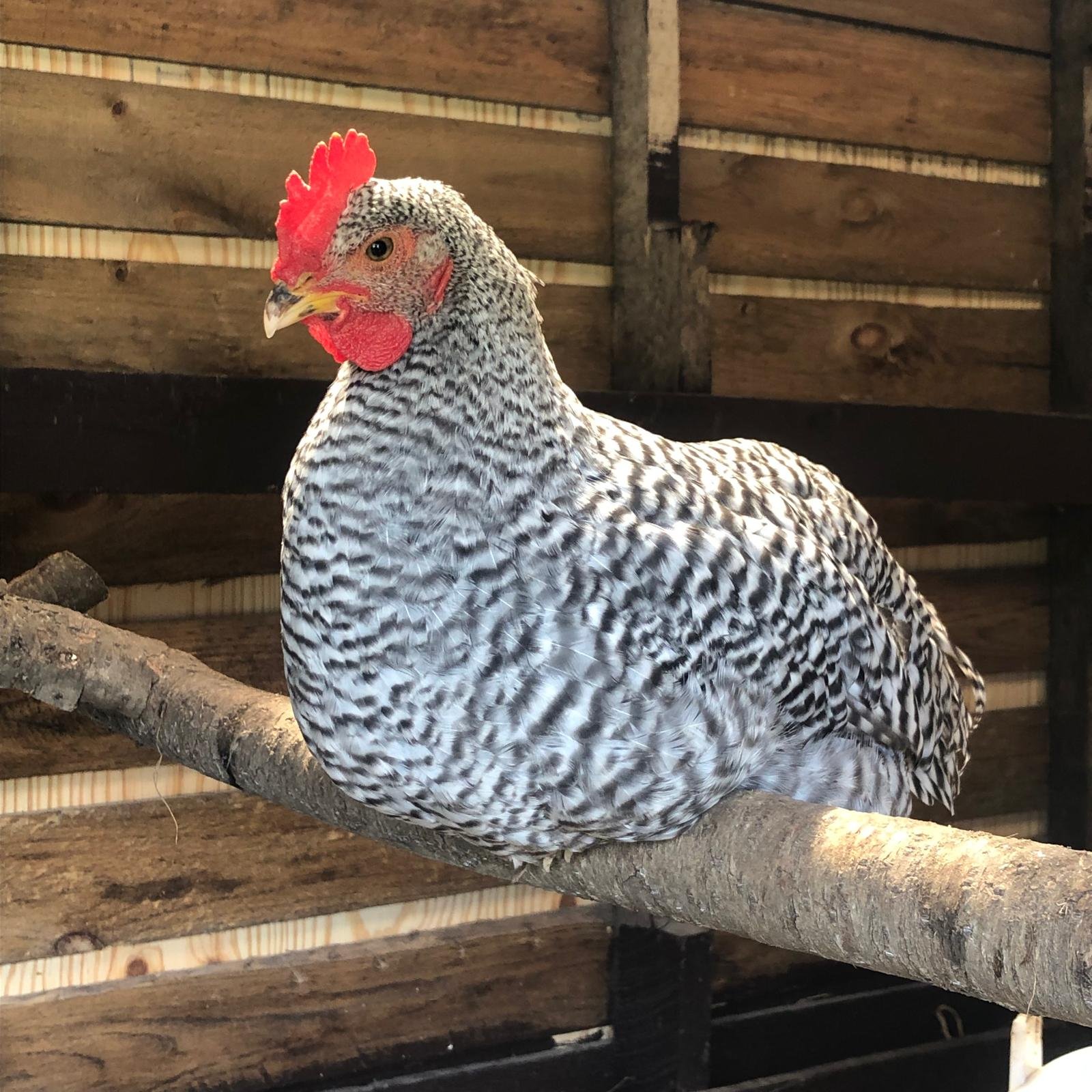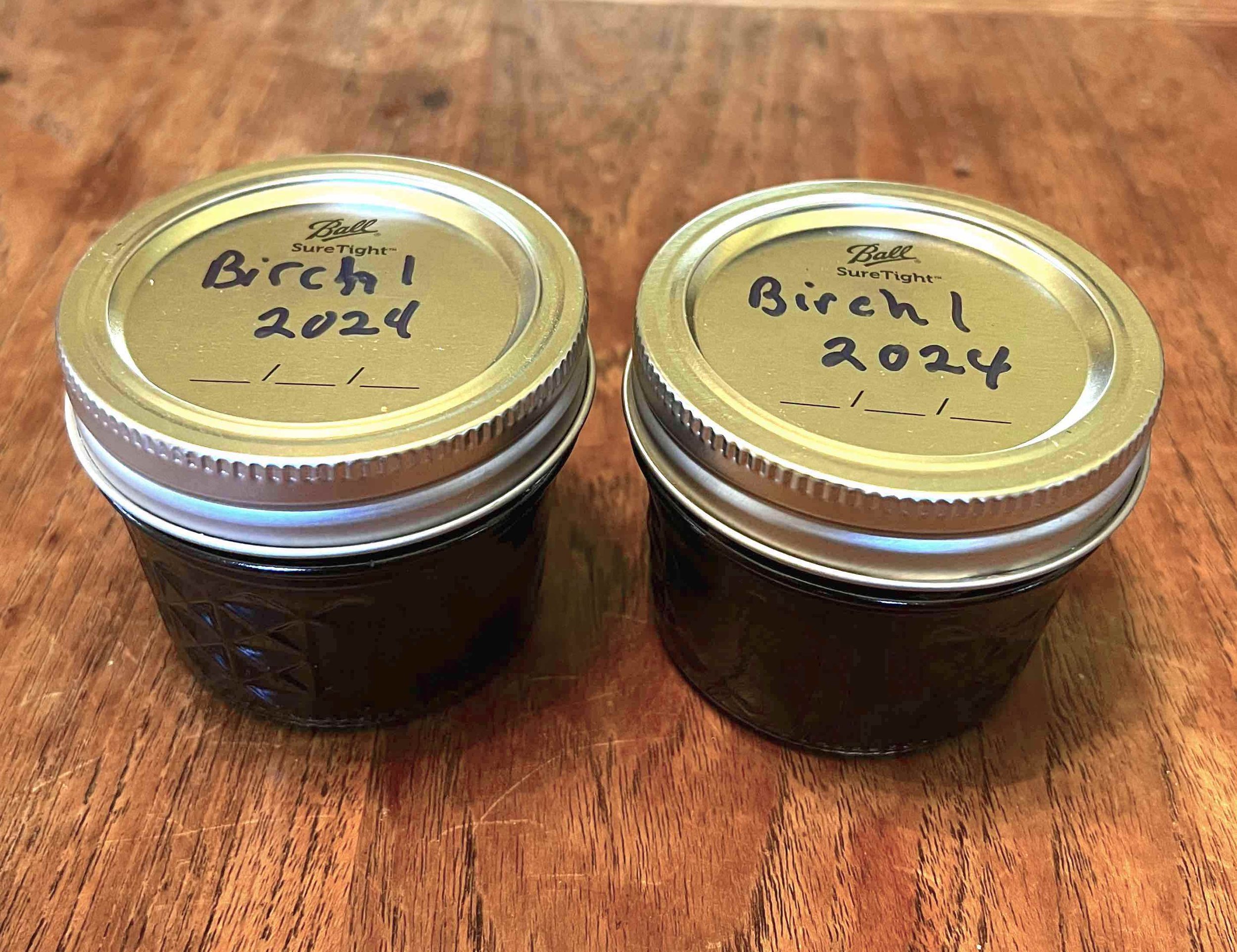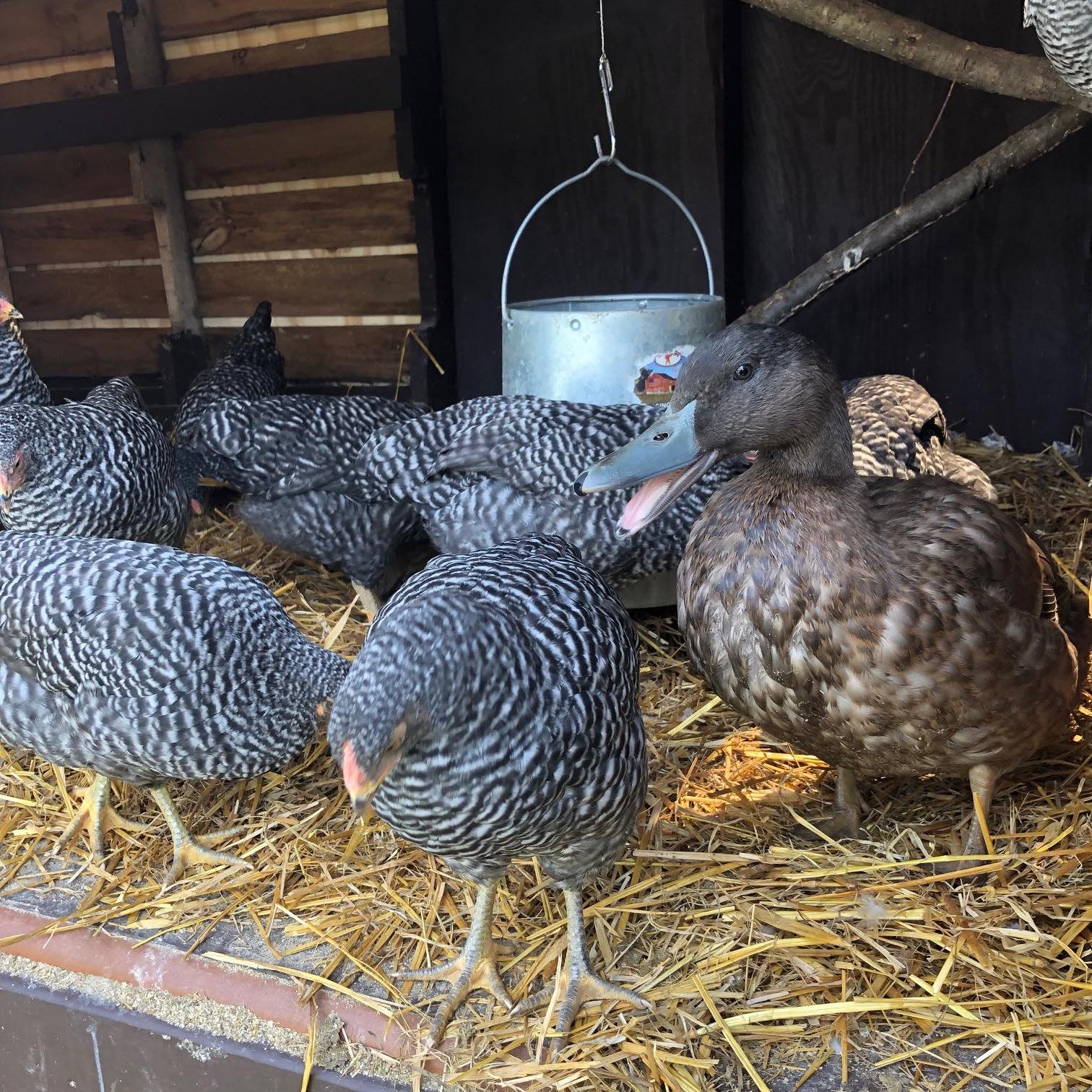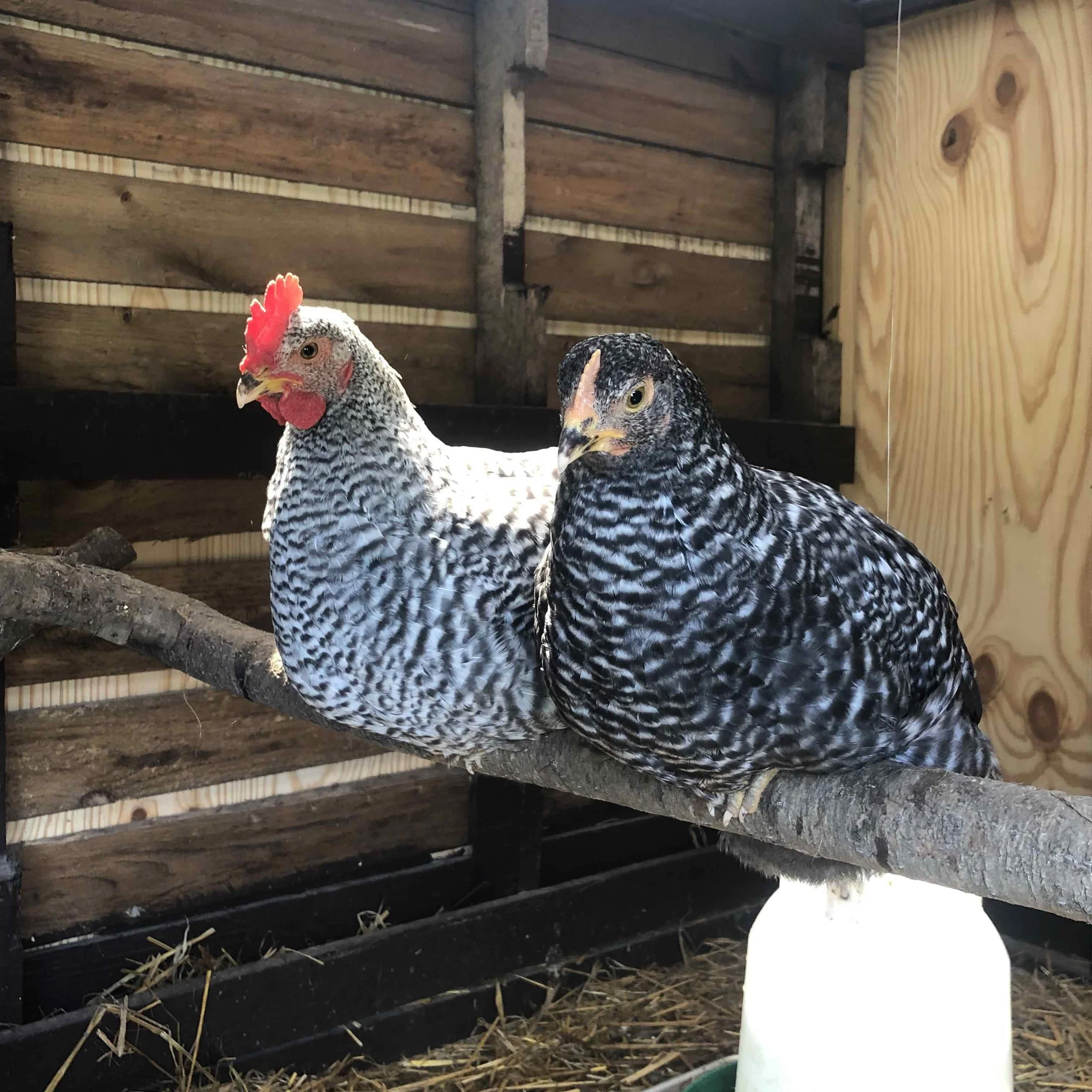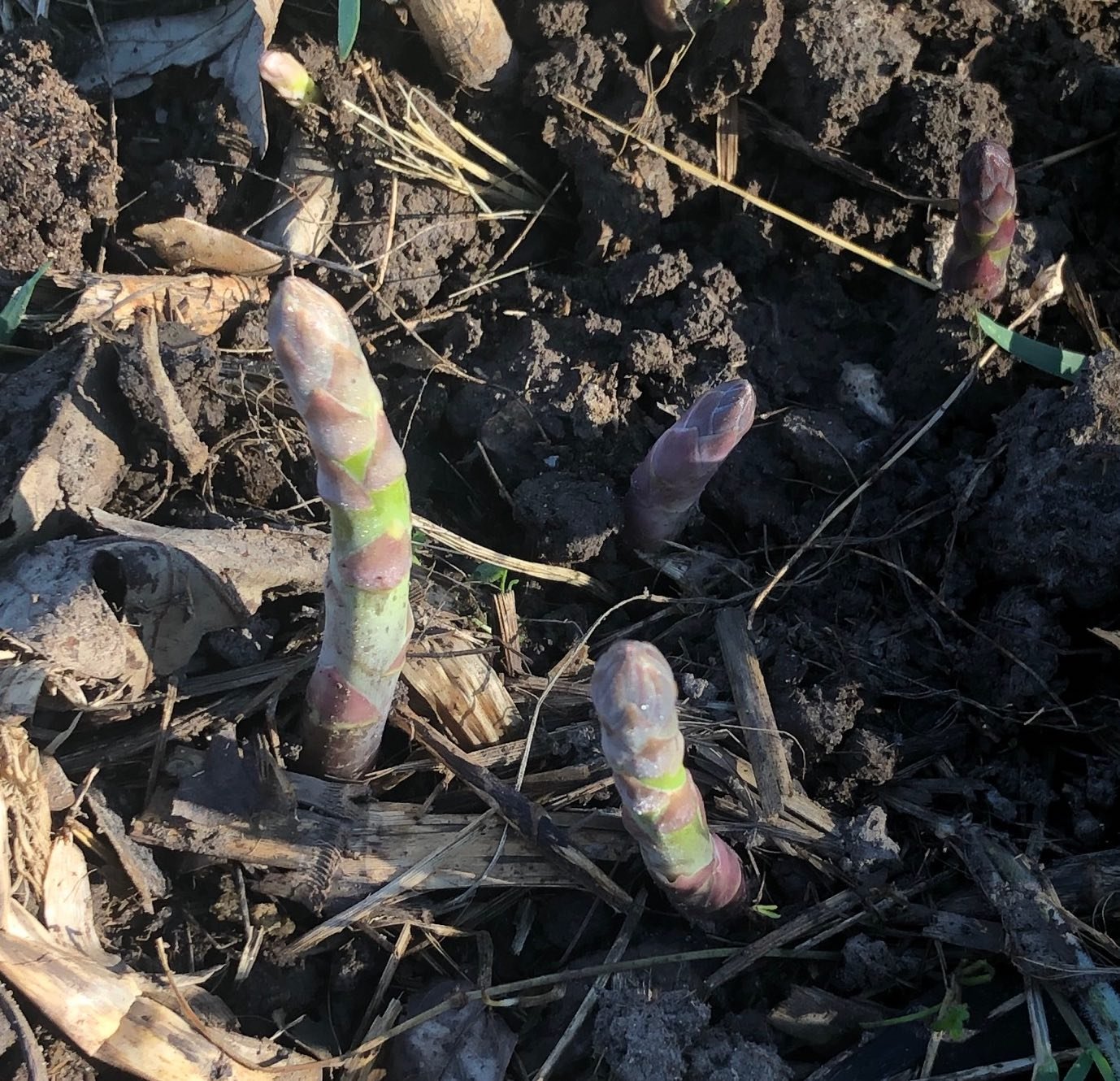105 ~ Spring update: of dark syrup, pale fowl, a perpetual garden and artists in a prairie
After the snows of early April (we had more snow here in April than in February), the world has finally, resolutely, made its turn to spring. I'll share some updates from the farmstead, starting in alphabetical order - birches, then birds. It's a magical season of renewal; I think Lao, Thai and Khmer people are onto something by celebrating their New Year in April.
This year, after the flow of maple sap ended, I was able to again make a run at producing birch syrup (the first time in a couple of years). I tapped ten paper birches early this month, the sap flowed well for a couple of weeks, and seems to have ended in the last few days (this afternoon I'll remove the taps). About 60 gallons of sap got boiled down to just 4 pints or so of a dark, magical reduction. It's amazing stuff, syrup for adults, with a rich, complex flavor that evolves with each batch as the character of the sap changes through the advancing spring. Birches are beautiful things, and I love the contrast of this refined, pale, seemingly delicate tree producing a syrup of such dark, untamed oomph.
As to birds... The male goldfinches have shifted to their brightest yellow (mirrored now by the dandelions in the lawn), and new birds still appear almost daily; yesterday it was the first White-crowned Sparrow pausing at the feeder, a spring passage migrant headed to the far north to nest. On the domestic side, I'm pleased to report that the chicks and Brandy the duck are doing well. Brandy turned out to be a 'she', so we can expect an occasional duck egg once things get rolling. We had one casualty along the way, lost one small chick to an accident (such things happen), but we've settled into a chicken flock of ten young, vibrant, dark Dominque hens, and a Dominique rooster.
Brandy keeping her still smaller cousins in line.
Dominiques are America's oldest chicken breed, and were already well known by the time the Declaration of Independence was signed. Come the 1980s, however, the breed was at risk of disappearing, and the poultry community initiated a successful conservation effort. I’m glad to do my part! I love these chickens - beautiful, friendly, and street smart.
Interestingly, my young Dominique rooster is paler than any of the hens. He's like a dandy in a gray flannel suit and red fedora (photo above). Given that his plumage emerged as the same sublime shade of pearl as a male Harrier, his name came easily: "Harry". It suits a fine beau like him. A few days ago, I heard his first, tentative, croaking attempts at a 'cock-a-doodle-do'. He's got a ways to go yet, but he'll get there, and it will be nice to again hear a rooster greeting the dawn at the farm.
Young handsome Harry and one of his girls. Bishop and nun.
The Ho-Chunk people who traditionally occupied this land would at this time of year move from their winter deer hunting camps in the small sheltered valleys here down to encampments along the Wisconsin River, for a summer season of fishing and collecting freshwater clams and mussels. For me, the shift of my subsistence attention at this turn of seasons is to the vegetable gardens (but also, somewhat Ho-Chunk-like, to the Driftless trout streams - opening day of the Wisconsin trout season is next Saturday...). Something I enjoy aiming for is a garden that produces some fresh produce all year, in every month. The goal is to overlap the last harvest of the previous year's garden with the first planting of this year. This spring I made it, thanks to one last beautiful leek, planted last spring and which survived through the winter. I harvested it a few days ago, after planting the peas, and turned it into a celebratory frittata, to mark the handover from the past growing season to the new.
That's a wonderful thing about leeks - plant them in spring (best done as small starter 'threads', available from many greenhouses), let some of them run and grow all summer into fall, and when the deep cold approaches, just toss around their bases a handful or two of insulation (hay, straw or just some dead leaves or grass clippings), and they will keep all winter. The thick tops stay fresh through the most bitter cold, a welcome green hand in winter, always raised to let you know 'I'm here!'. They’re a source of delicious fresh food when the sun is far away.
Other garden gifts of early spring are perennials. God bless labor-free perennial foods, of which two of my heroes are rhubarb and asparagus. As usual, the rhubarb emerged first (about keeping pace with the daffodils), and just yesterday, the first green noses of my asparagus finally poked from the earth to sniff the spring air. My asparagus is a couple weeks behind a friend's near Madison, but that's the way of the world down here in the cool 'holler' of this little valley.
Other things I've planted thus far are potatoes, radishes, arugula, spinach and some lettuce. I rarely bother much with lettuce, since there are so many delicious, nutritionally dense wild greens available at this time of year. Yesterday I had a wonderful tossed salad of dandelion greens and their flowers (a salad like a Packers huddle).
That about covers it for this tail-end of April. I'm rigged and ready to go for the opening day of trout season, and recent rains have sprouted cautious hopes for a good morel season in May. We shall see...
In an upcoming post I’ll share some of my favorite things for producing food and connecting me with nature. In a world submerged in tech, they are distinguished by their simplicity. More soon…
In the meantime, one thing I will definitely see in May (if not heaps of morels) is an art show, Driftless Prairie Visions, by my friend Karen Ellzey Wright and four other artists of the Driftless Area. It's a wonderful concept - the five of them will share their individual interpretations of the phenology of the plants of the same prairie (one restored near Sauk City) - this one prairie seen and translated through five sets of eyes and five hearts. The show will be on exhibit at the visitor center of the UW Arboretum in Madison, opening May 3, with an artist reception May 30 from 1:30 - 3:30 pm. I hope you'll get it on your calendar. For more information, visit here.
What I'm cooking and can recommend:
On the topic of leeks, sometime try this savory bread pudding. One of my fave comfort food recipes, from Thomas Keller of The French Laundry in California (perhaps shared previously, but worth repeating). I often bake two and put one in the freezer, to defrost and warm on another, wintry day - it holds up very well (note: don't worry too much about getting just the right type of bread - what the hell is a “Pullman loaf” anyway? - I've made it with various sorts of bread, all to good effect).
Leek Bread Pudding
Adapted from “Ad Hoc at Home” by Thomas Keller (Artisan, 2009)
Ingredients:
2 cups 1/2-inch-thick slices leeks, white and light green parts only, cleaned and rinsed
Kosher salt
4 tablespoons (2 ounces) unsalted butter
Freshly ground black pepper
12 cups 1-inch-cubed crustless brioche or Pullman loaf
1 tablespoon finely chopped chives
1 teaspoon fresh thyme leaves
3 large eggs
3 cups whole milk
3 cups heavy cream
Freshly grated nutmeg
1 cup shredded Comté or Emmenthaler cheese.
Preparation
1. Place a medium sauté pan over medium-high heat, drain excess water from leeks, and add to pan. Season with salt, and sauté until
leeks begin to soften, about 5 minutes, then reduce heat to medium-low. Stir in butter. Cover and cook, stirring occasionally, until
leeks are very soft, about 30 minutes. Adjust salt and pepper to taste.
2. Preheat oven to 350 degrees. While leeks are cooking, spread bread cubes on a baking sheet and bake until dry and pale gold, about
20 minutes, turning pan about halfway through. Transfer to a large bowl, leaving the oven on.
3. Add leeks, chives and thyme to the bowl of bread; toss well. In another large bowl, lightly whisk the eggs, then whisk in milk,
cream, a generous pinch of salt, pepper to taste and a pinch of nutmeg.
4. Sprinkle 1/4 cup shredded cheese in bottom of a 9-by-13-inch baking pan. Spread 1/2 of bread mixture in pan, and sprinkle with
another 1/4 cup cheese. Spread remaining bread mixture in pan, and sprinkle with another 1/4 cup cheese. Pour in enough milk
mixture to cover bread, and gently press on bread so milk soaks in. Let rest 15 minutes.
5. Add remaining milk mixture, letting some bread cubes protrude. Sprinkle with salt and remaining cheese. Bake until pudding is set and top is brown and bubbling, about 1 1/2 hours. Serve hot.
